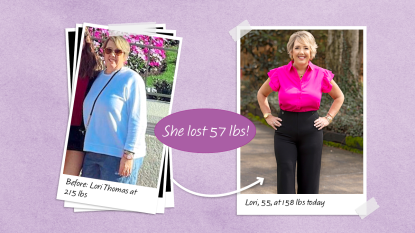6 Important Sun Protection Tips For People Who Love Tanning

“This is the last summer I am going to suntan.”
This is a little promise I make (and break) with myself every summer. At 42 years old, with countless sunburns and suntans behind me, I am ultimately scared of getting skin cancer. After all, I am a product of the good ‘ol days when tin foil and baby oil were the secret to a great tan. Back then, we just didn’t know all the sun protection tips or the true dangers of laying out.
Now we know — but old habits die hard. I love everything about the sun: the feel of the rays beating against my pale, Irish skin, the way it brings a smile to my face and brightens my mood almost instantly. And yes — I love being tan. For someone who has struggled with self-esteem and body image issues for most of my adult life, being tan is a simple thing that makes me feel great.
But after a conversation with Dr. Debra Jaliman, board-certified NYC dermatologist and author of Skin Rules: Trade Secrets from a Top New York Dermatologist ($10.39, Amazon), my desire to maintain my good health (and keep my skin looking young as possible) may finally be surpassing my love of having a tan — or at least a tan that comes from laying in the sun.
Here are her sun protection tips:
Sun Exposure is Cumulative
I have been trying to convince myself for years that 20 minutes of sun exposure each day is harmless. It’s a healthy dose of vitamin D, right? Wrong. “Sun damage is cumulative; even ten minutes of exposure a day over the course of a lifetime is enough to cause major problems and age your skin drastically,” says Jaliman. She suggests using sunscreen with an SPF of 30 or higher and doing so year-round regardless of outdoor temperature. “The UV rays that cause you to get those fine lines, wrinkles and cause skin pigmentation are present throughout the year,” she says. And yes, they go through clouds.
Don’t Wait to See a Dermatologist
“Once someone reaches adulthood they should have a yearly body check,” suggests Jaliman. “If you have a history of skin cancer and have any suspicious moles or other spots you should go sooner.” One thing that has prevented me from making an appointment was embarrassment about my tanning habits, but Jaliman assured me there is no need to be. “We have all at some point in our lives spent a bit more time out in the sun than we should have,” she says. “A few minutes at your dermatologist’s office can save your life or in the very least help lighten hyperpigmentation.”
Treat Every Sunburn
Sometimes, we forget to pack or re-apply the sunscreen and sunburns happen. It is important to treat every sunburn both for pain relief and skin-healing. Jaliman recommends putting fragrance-free aloe in the refrigerator before applying. “This will feel super cool to the body and soothe the sunburn due to its anti-inflammatory properties.” Pure aloe directly from the plant is the best kind, so read those labels before purchasing.
She also recommends taking aspirin to help with the inflammation and the pain. Swelling often accompanies sunburn, so a hydrocortisone lotion can be used for any itching and inflammation.
Know Your Risk Factors
Genetics play an important role in skin cancer. It is important to know your family history and share it with your dermatologist. “Families tend to have similar skin types, which may increase your risk of developing a skin cancer if you have a strong family history of malignant melanomas,” says Jaliman.
Monitor Your Skin
Be sure to scan your skin at home and keep an eye on any irregular moles. “Moles over time may change in shape and color,” says Jaliman. “Moles that have a large diameter, asymmetry, irregular border, or various shades of color have a higher change of being or turning into skin cancer. A mild or moderate atypical mole may have one or some of the changes mentioned above but that doesn’t always mean it is cancer. It needs to be monitored closely because it may become a skin cancer.”
Try a Spray Tan
If you’re like me and really love the glow of a summer tan, you can always hop into your local tanning salon and try a spray tan. Spray tans are becoming more and more popular (and affordable!) and there are many different methods available at most tanning salons. From airbrush tanning to automated spray machines, you’re likely to find a good fit and adopt a new, less dangerous habit. Spray tans typically last 7-10 days and look more natural than an at-home tanning lotion.













